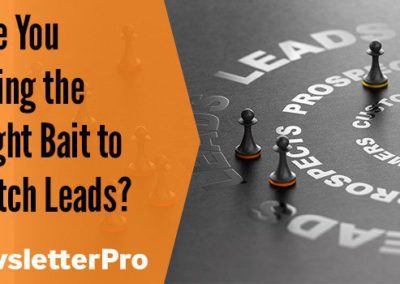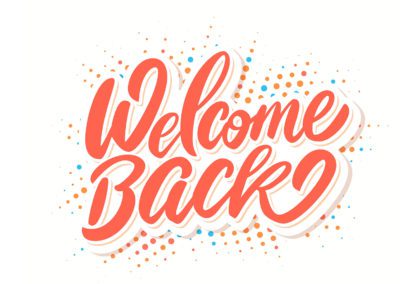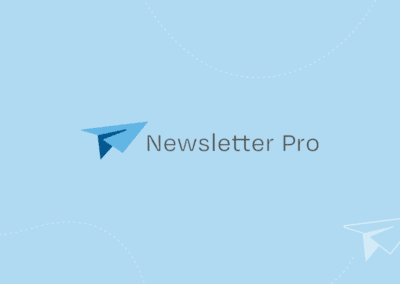They say love is a battlefield, and you can’t deny that marketing is too. After all, courting a potential customer is a lot like courting your potential soul mate. You put your best foot forward, show them what makes you better than the competition, and pray they feel the same enthusiasm for you as you do for them.
It’s a stressful process, but after a long fight, it’s time to send out those wedding invitations. You’ve found your marketing true love: Direct Mail!

Direct mail is, by far, the best option for increasing your ROI, improving your retention, boosting your referrals, and connecting with your customers than any other marketing strategy.
Don’t believe me? Okay, let’s play a game.

I dare you to use only an email to wish your significant other happy birthday the next time that special day rolls around. Just an email. No phone calls, no birthday breakfast, no flowers sent to the office, no romantic dinner — nothing. Only a single email.
Did you laugh?
Cringe?
Say, “Only if I want to sleep on the couch for a month!”?
It’s ridiculous, right? Sure, just go ahead and tuck that heartfelt message in there between the Amazon order confirmation and a Groupon offer. If it doesn’t end up in spam, of course.
We all know that an email or text isn’t enough when it comes to our personal relationships, so why would you ever rely on them for your marketing? The physical introduction of direct mail has a far greater impact on people than digital marketing.
Still feeling cold feet about this option?
Let’s play another game — one I like to call “The Direct Mail Dating Game!”
Question 1: I know my customers spend time on social media. Shouldn’t I just advertise there?
Let’s go back to that terrible birthday email idea. What if instead of sending them an email, you posted your birthday greeting to your loved one’s Facebook wall? Again, the only method you use to acknowledge the occasion.
Now at least they might get a notification of your post! Along with the others from everyone else on their friends list. Is your happy birthday message really going to stand out among the others from countless friends, family members, and co-workers? More importantly, do you think this single social media post will be enough to keep you out of the dog house?
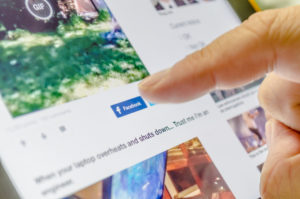
Mixed in with the endless stream of cat videos, pictures of someone’s lunch, and the not-so-occasional political rant, ads on Facebook can get even less of a positive response than the happy birthday post. Without a tremendous financial investment, Facebook ads have next to no chance of catching — or holding — your customer’s attention.
And that’s if customers see your ads at all! AdBlock has more than once beat Facebook’s attempt to override ad-blocking software.
With all these drawbacks, it’s no wonder Forbes.com declared Facebook adversting a “bad investment for small businesses.”
That being said, it’s not terrible to have a Facebook page. Even we at The Newsletter Pro have one!
Question 2: How do I know my customers even want to receive something from me?
This one’s easy! In short, people like getting mail.
Americans buy 6.5 billion greeting cards every year. That’s a retail value of over $7 billion! Even though they have the ability to acknowledge more birthdays through social media — especially Facebook — consumers aren’t buying fewer greeting cards.
 According to the Huffington Post, this may be due in part to the prestige associated with direct mail: “The old-fashioned way of mailing can only be done as a luxury.” This means that when the relationship matters, high-quality direct mail is the only way to go.
According to the Huffington Post, this may be due in part to the prestige associated with direct mail: “The old-fashioned way of mailing can only be done as a luxury.” This means that when the relationship matters, high-quality direct mail is the only way to go.
Furthermore, a physical item received in the mail is more likely to stand out in a person’s mind. In 2010, the U.S. Postal Service reported that the average home only received one piece of personal correspondence every seven weeks!
Best of all, when researching the appeal of direct mail specifically, the Direct Marketing Association found that 51 percent of consumers would prefer to be receiving direct mail from local businesses over digital.
Question 3: Okay, people may enjoy getting mail, but how do you know direct mail works?
To start, direct mail guarantees your product is going directly into the hands of your customers and not getting knocked into the trash by an email filter. Even better, 70–80 percent of consumers say they open all of their mail, even “junk mail.”
Getting your message to customers is only half the battle, but direct mail has yet another advantage going for it: Seventy-nine percent of customers said they would immediately act on an offer received via direct mail. Compare this to the only 45 percent from email.
If you’re still hesitant to break out the stamps, just take a look at electronics giant and major e-advocate, Sony.
When competition in the electronics field grew, Sony found their sales were dropping. Their advertisements weren’t bringing in as many new customers. In a stroke of marketing genius, Sony realized customer retention was the way to go.
To increase revenue and strengthen their brand, Sony looked for a way to get customers who’d already made a large purchase with them to make another purchase in a short time. Their ultimate goal was to increase revenue from these repeated purchases by 20 percent in just 90 days.
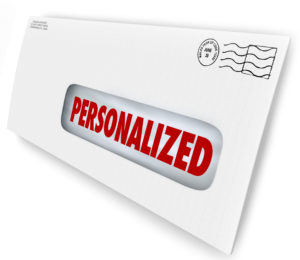 Rather than jump in with an email blast or ad, Sony took advantage of one of direct mail’s biggest advantages: personalization.
Rather than jump in with an email blast or ad, Sony took advantage of one of direct mail’s biggest advantages: personalization.
Within two weeks of making a big purchase, Sony customers received a customized postcard thanking them by name and referencing the product they bought. The postcard went on to offer them 10 percent off of the purchase of a DVD player. Two weeks later, a follow-up postcard was sent, this time offering a discount on a new TV.
The campaign was cheap, easy, and best of all, the results beat Sony’s expectations. They saw a 145 percent increase in repeat sales! The revenue per thousand pieces was four times that of electronic campaigns, and the ROI was four times the company’s threshold.
Choosing Bachelor Number One Direct Mail
Looking at the value people place on personalization — as highlighted by the high-end greeting card industry’s success — coupled with the impact personalization can have in a marketing campaign like Sony’s, the advantages of direct mail over digital are obvious.
But none of this is to say you should avoid digital marketing altogether.
We have profiles on Facebook, Twitter, and LinkedIn because we know the power of a good platform. Social media and digital marketing can be really effective methods for connecting audiences. But it can be challenging to draw in new customers or maintain retention in crowded cyberspace.
When used strategically, a balanced online/offline marketing campaign can produce killer results!
If you’re still not ready to call direct mail your marketing match made in heaven, why not grab a copy of our free book? It’s the perfect dating guide when it comes to everything you need to know about direct marketing and professional newsletters.




